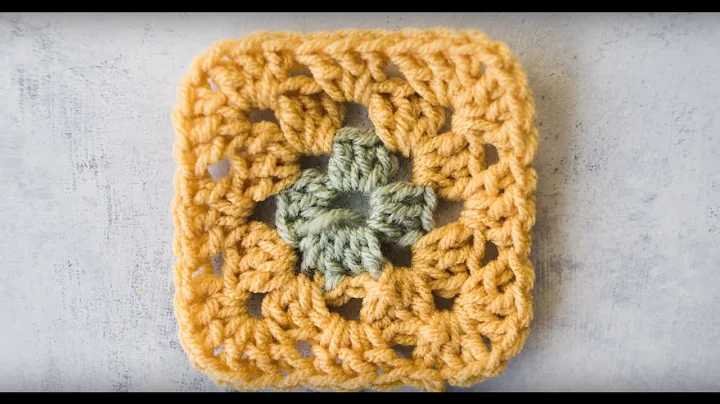Trouble Meeting Gauge? Try These Helpful Tips
Table of Contents
- Introduction
- Understanding Gauge
- What is Gauge?
- Why is Gauge Important?
- Making a Gauge Swatch
- Materials Needed
- How to Make a Gauge Swatch
- Adjusting Gauge
- Factors Affecting Gauge
- Changing Hook Size
- Changing Yarn Weight
- Adjusting Tension
- Dealing with Imperfect Gauge
- Embracing Imperfection
- The Importance of Fit
- Considering Yardage
- When Gauge is Not Close Enough
- Walking Away from Gauge Swatches
- Choosing Between Row Height and Number of Stitches
- Making Adjustments for Inaccurate Gauge
- Doing the Math
- Taking Risks
- Considering Other Measurements
- Evaluating Fabric Quality
- The Importance of Fabric
- Stiff vs Flimsy Fabric
- Conclusion and Next Steps
- Embracing the Adventure of Crafting
- Building Knowledge through Swatching
- Final Thoughts and Resources
Understanding Gauge in Crochet
Crocheting is a wonderful craft that allows for endless creativity and the creation of beautiful handmade items. One important aspect of crochet that often gets overlooked is gauge. Understanding and achieving the correct gauge is essential to ensuring that your crocheted projects turn out as intended. In this article, we will explore what gauge is, why it's important, how to make a gauge swatch, and how to adjust your gauge if needed.
What is Gauge?
Gauge refers to the number of stitches and rows per inch in a crocheted fabric. It determines the size and proportions of your project, such as the width, length, and fit. Every crochet pattern provides a gauge measurement, usually stated as a certain number of stitches and rows worked in a specific stitch pattern using a recommended hook size and yarn weight.
Why is Gauge Important?
Achieving the correct gauge is crucial because it ensures that your finished project will not only look as intended but also have the correct dimensions and fit. It allows you to accurately replicate the design and achieve the desired size. If your gauge is too loose, your project will turn out larger than expected, while a tighter gauge will result in a smaller project. Ignoring gauge can lead to ill-fitting garments or items that don't match the pattern's intended measurements.
Making a Gauge Swatch
Before diving into a crochet project, it's important to make a gauge swatch. A gauge swatch is a small sample of crochet fabric that allows you to measure your stitch and row count to determine if it matches the pattern's gauge. To make a gauge swatch, you will need a few materials:
- Yarn: Use the same yarn that you plan to use for your project.
- Crochet hook: Choose the recommended hook size mentioned in the pattern.
- Stitch markers: Optional but helpful for marking stitches in your swatch.
- Measuring tape or ruler: Use a tool that accurately measures inches or centimeters.
To make a gauge swatch, follow these steps:
- Start with a foundation chain of at least 20 stitches.
- Work in the specified stitch pattern for a few inches, making sure to maintain consistent tension.
- Measure the width and height of your swatch using the measuring tape or ruler.
- Count the number of stitches across and rows vertically within a given measurement (usually 4 inches).
- Compare your stitch and row count to the pattern's gauge. If it matches, congratulations! If not, you will need to adjust your gauge.
Adjusting Gauge
There are several factors that can affect your gauge, such as hook size, yarn weight, and tension. Adjusting your gauge may be necessary to achieve the desired measurements. Here are some techniques for adjusting your gauge:
Changing Hook Size
If your gauge is too tight, meaning you have more stitches and rows than specified, try using a larger crochet hook. Alternatively, if your gauge is too loose with fewer stitches and rows, switch to a smaller hook size. Experiment with different hook sizes until you achieve the correct gauge.
Changing Yarn Weight
Another way to adjust your gauge is by changing the yarn weight. Thicker yarn will generally result in bigger stitches, while thinner yarn will create smaller stitches. If your gauge is off, try switching to a different yarn weight that matches the pattern's intended gauge.
Adjusting Tension
Your tension, or how tightly you hold the yarn and work your stitches, can greatly impact your gauge. If your stitches are too tight, try loosening your tension. On the other hand, if your stitches are too loose, tighten your tension. Practice adjusting your tension until you achieve the correct gauge.
Dealing with Imperfect Gauge
Despite your best efforts, achieving the perfect gauge is not always possible. As a crocheter, it's important to embrace imperfection and find solutions when your gauge is not spot on. Here are some considerations when dealing with imperfect gauge:
Embracing Imperfection
Remember that handmade items have a unique charm precisely because they are not machine-perfect. Embrace the imperfections in your stitches as they add character to your work and make it truly handmade.
The Importance of Fit
Consider the purpose of your project and the desired fit. If you're creating something that requires a non-specific fit, such as a scarf or blanket, close can be close enough. However, if you're making a garment, it's crucial to ensure the fit is accurate.
Considering Yardage
Evaluate the amount of yarn you have and how closely your gauge matches the pattern. If your gauge is significantly different, you may need to adjust the number of stitches or rows to ensure you don't run out of yarn.
When Gauge is Not Close Enough
Sometimes, despite your best attempts, achieving a close gauge is just not possible. In such cases, you have two options: continue adjusting your gauge or accept that close is close enough. Here's what you need to consider:
 WHY YOU SHOULD CHOOSE BEAUTYBADY
WHY YOU SHOULD CHOOSE BEAUTYBADY







